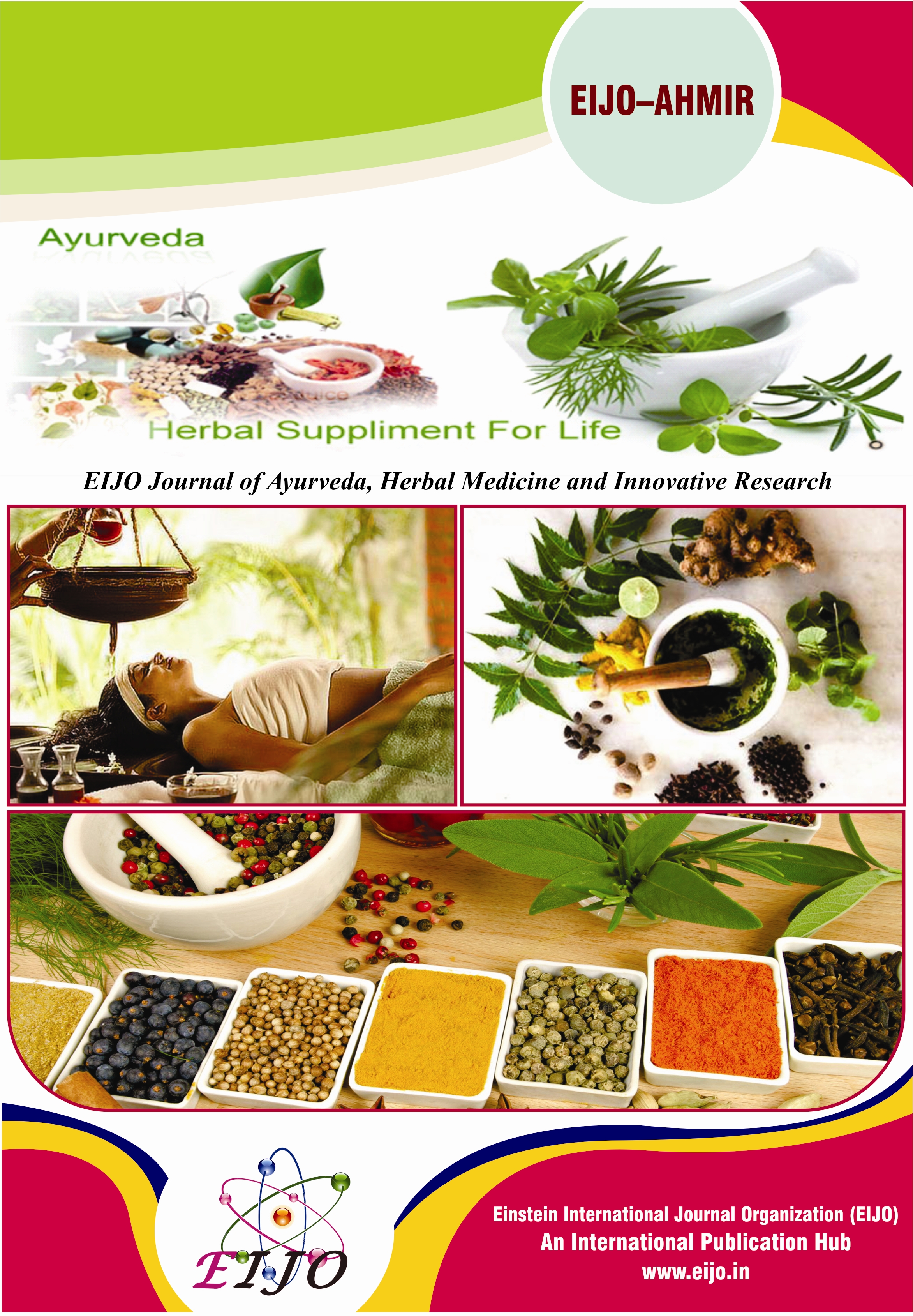JOURNALS || EIJO Journal of Ayurveda, Herbal Medicine and Innovative Research (EIJO – AHMIR) [ ISSN : 2456 - 530X ]
Abstract
Infertility is defined as failure to conceive after one year of regular unprotected intercourse. It affects 10-15% of couples of reproductive age group. Infertility can be due to either partner or both. Overall ,an etiology for infertility can be found in 80% of cases with an even distribution of male and female factors, including couples with multiple factors. A primary diagnosis of male factor is made approximately 25% of cases. Ovulatory dysfunction and tubal /peritoneal factors comprises of majority of female factor infertility. In 15% to 25% of infertile couples the aetiology cannot be found and diagnosis of infertility is made. IUI (INTRAUTERINE INSEMINATION) OR ARTIFICIAL INSEMINATION is a treatment that involves placing sperm inside a woman’s uterus to falicitate fertilization. The goal is to increase the number of sperms that reaches the fallopian tube and increasing the chances of fertilization.
The ancient system of Unani medicine advocated variety of medication, which provides good results without any harmful effect. Reasons such as weight, diet, smoking, other substance abuse, environmental pollutants, infections, medical conditions, medications and family medical history could affect conception in couples
IUI: It is one of the simplest and earliest assisted reproductive technologies (ART). It is a form of ILAJ BIT TADBIR where the sperm from the partner is inserted with a syringe into woman’s uterus during ovulation to increase the probability that fertilization would occur. As we are not doing treatment with some medicine but with a tadbir, it can rightly be said as Ilaj bit tadbir in Unani system of medicines.This is relative simple method and this is most effective method for couples with male infertility problems. It is less invasive and less expensive option compared to in vitro fertilization(IVF).Contrary to IVF/ICSI methods, IUI is easy to perform, inexpensive and offers particular advantage such as minimal equipment required, an easy technique to learn, being less invasive with a reduced psychological burden on the couple when compared to IVF/ICSI.
The methods and indication are discussed in full length paper.
Keywords: IUI, Infertility, Ilaj Bit Tadbir, Oligospermia, Anovulation
[1]. Current diagnosis and treatment’’ ALAN H. DECHERNEY, LAUREN NATHAN, NERI LAUFER. ASHLEY S.ROMAN EFERENCES.
[2]. Khan Ajmal.Hazique.New Delhi: Jaseem Book Depo.1983; 460-471
[3]. Daar A, Merali Z. “Infertility and social suffering: the case of ART in developing countries”, In: Vayena E, Rowe P, Griffin D, editors. Report of a meeting on "Medical, Ethical, and Social Aspects of Assisted reproductive technique IBN –E-SINA Kitab- al-Qanoon-Fil-Tibb CCRUM; 1985:220-221 30
[4]. Hakeem Sayyd Qamaluudin huseen hmdani,Assbab-e-stta Zruriya Ibn sina. Al Qanoon fil Tib (English Translation) 1st,2nd. New Delhi: Jamia Hamdard; 1998: 107-117, 391-392. 37.
[5]. Kbeeruddin M. Ifadah Kabeer. New Delhi: CCRUM; 2001: 108-114, 204-280
[6]. Oversstreet JW,Brazil C. Semen analysis. In:lipshultz Li,Howards SS,eds. Infertility in the male. 3rd Cambridge school university press,1992.
[7]. w.ombelet ,R.Campo,E. Bosmans,M.Nijs intrauterine insemination (IUI) as a first line treatment in developing countries and methodological aspects that might influence IUI..WHO Health Organisation WHO laboratory manual for the examination and processing of human semen( 5TH edition),WHO press,Switzerland,geneva(2010)
[8]. William ombelet,Evidence –based recommendation for IUI in daily practice, middle east fertility society journal, vol 18,issue2,2013.
[9]. Tomlinson MJ, Amissah-Arthur JB, Thompson KA, Kasraie JL, Bentick B: Prognostic indicators for intrauterine insemination (IUI): statistical model for IUI success. Hum Reprod. 1996, 11: 1892-6.
[10]. S.M.Verhulst, B.J.Cohlen,E.Hughes,V.E.Te,M.J.HeinemanNuojua-Huttunen S, Tomas C, Bloigu R, Tuomivaara L, Martikainen H: Intrauterine insemination treatment in subfertility: an analysis of factors affecting outcome. Hum Reprod. 1999, 14 (3): 698-703. 10.1093/humrep/14.3.698.
[11]. Aboulghar ,M.A.Mansour,R.T.,Serour, G.I.Amin ,y,Ramzy,A.M.Sattar,M.A.and Kamal,A.(1999) intrauterine insemination for unexplained subfertility Cocharane database syst rev (2006),p.CDOO1838 MANAGEMENT OF LONG STANDING UNEXPLAINED INFERTILITY, A PROSPECTIVE STUDY Am,J.Obstet.Gynecol181,371-375 Vg Padubidri,SN Daftary, Howkins and Browne Shaws Textbook of Gynaecology.



